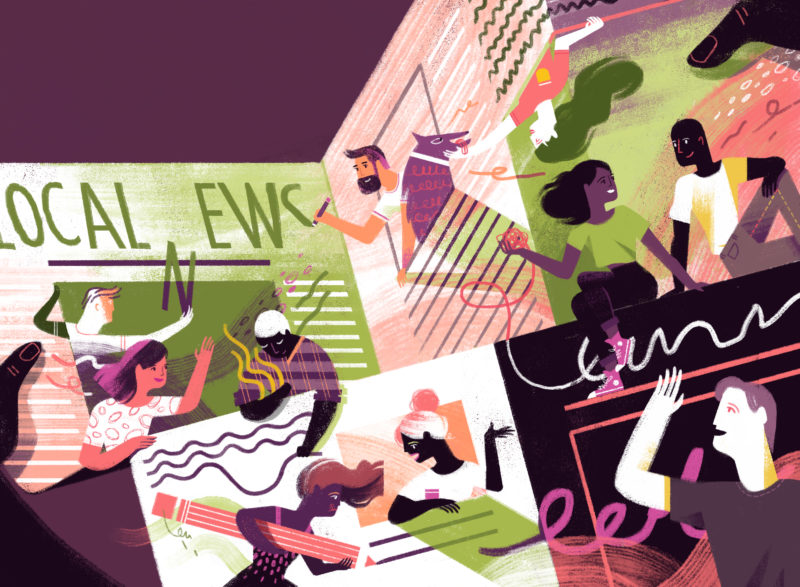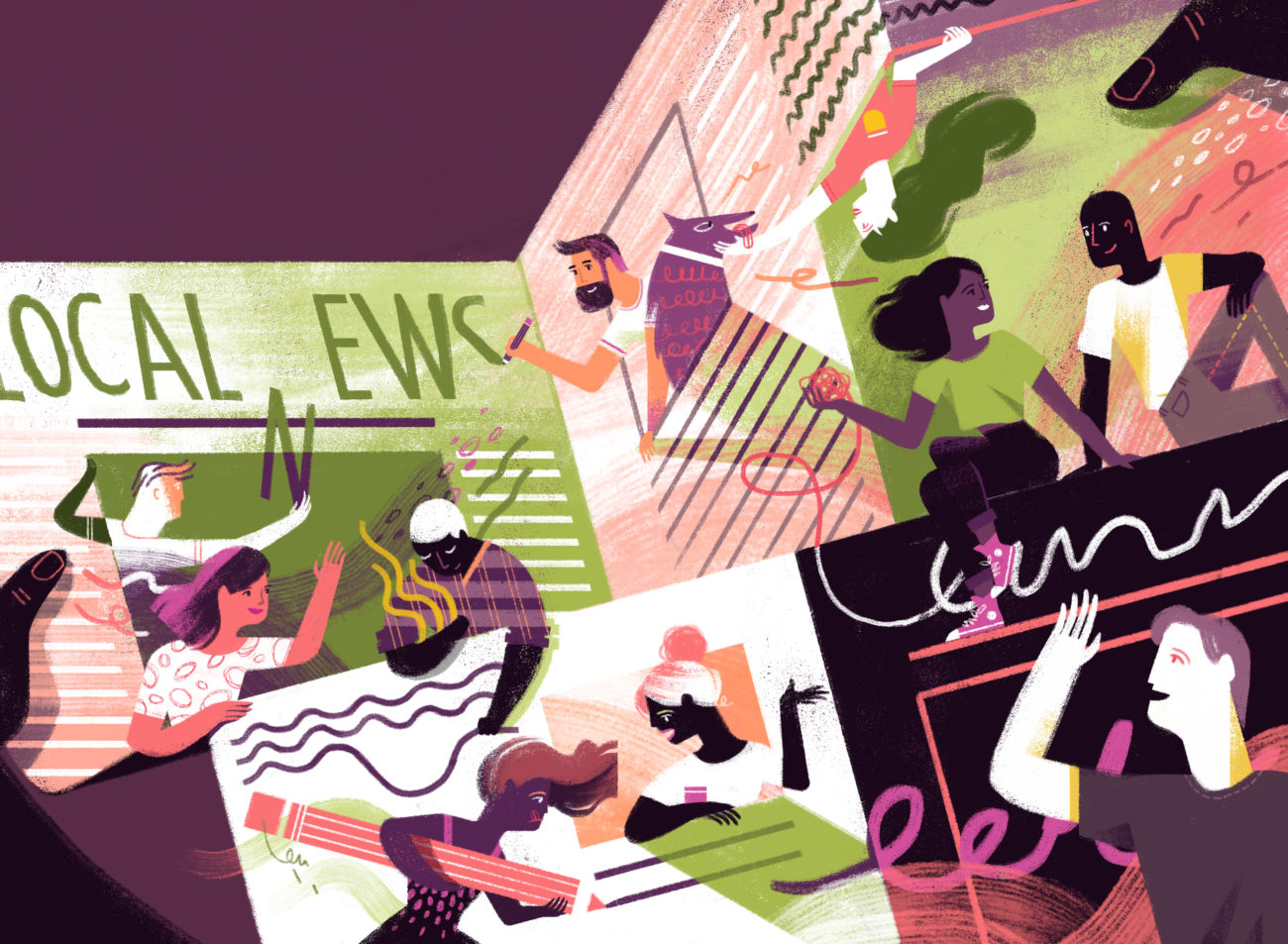Sign up for The Media Today, CJR’s daily newsletter.
It was not all that long ago that the robust heart of American journalism could be found in local newsrooms across the country—newspaper newsrooms, mostly, whose work was then amplified and expanded on by local radio and television.
Just as Americans viscerally grasped Tip O’Neill’s statement that all politics was local, journalists recognized that our most important work was local.
Oh sure, many of us aspired to postings internationally or in Washington. But even then the great stars knew where they came from and where the great stories came from, too. After all, the defining story of my formative years as a journalist was regularly described as a local police story. Regularly and proudly. That story led to the unseating of a president.
We were, in that way, really quite different from journalism in many other developed countries, just as our federal system, with powers reserved for the states and for the people in their local communities, was different from the politics of those countries.
But while our country, providentially, has preserved that division of power through considerable disruption in our political culture, our journalism lost its focus on local. We tend to talk about this as if we were passive victims of a great disruption that decimated the business models that had made local coverage an enormous profit center. But it was more than that. And we need to face that reality if we have any hope of bringing local back to the heart of American journalism, for our own sake and the country’s.
TRENDING: A hidden message in memo justifying Comey’s firing
In the course of dealing with the business disruption, we began to lose sight of the journalistic mission. The cool kids were no longer the ones breaking news at city hall or driving a local investigative unit. Instead, they were honing their entrepreneurial spirit, figuring out how to create new models for journalism. Clearly, this was badly needed. The problem was that in the first 20 years of digital media those new models pulled us away from local journalism, sowing the seeds for our present civic crisis.
It wasn’t exactly on purpose, but we talked about eyeballs and scale as a new holy grail. One very well-known media executive actually said the words to me, “Build it and they will come.” (We did, by the way, and they did come. But their value in supporting our journalism was much less than that executive or any of us had hoped.)
Innovation reigned. We created powerful new forms of journalism and engaged large new followings. But virtually all of the investment and invention was at the national level.
Now the country is beginning to grasp the service and value of local journalism that has been sucked from our civic culture.
The result of this new journalistic culture has been a significant reduction in resources focused on the basic work of covering communities. Bird-dogging your local government didn’t scale. “Local news disinvestment has been the decade’s dominant theme in the industry,” wrote media analyst Ken Doctor.
The shift in Washington coverage illustrates the larger pattern. During the years that local newsrooms have been significantly reduced, the number of journalists in Washington has increased. But their focus has changed. Most are working for new, digitally based organizations serving niche audiences that follow the work of Washington as it affects their business interests. Nothing wrong with that kind of journalism. It’s the way the profession started centuries ago among trading companies in Europe.
But while all that innovation and building was going on, the number of reporters sending back news to local communities from Washington has been cut in half. Is it any wonder people feel disconnected from the work of the federal government? Our actions helped disconnect them.
One personal note here*. I didn’t just live through all this. I was present and involved every step of the way. So if you hear a criticism, it’s self-criticism every bit as much as a critique of our profession.
But the critique is not the point. The moment has arrived to turn this around. To reverse the disinvestment. To restore local journalism to its central place in our news culture.
Journalists have known for years about the jobs lost. Now the country is beginning to grasp the service and value of local journalism that has been sucked from our civic culture.
“The great crisis for American journalism and democratic society shouldn’t be thought about at the platform level—newspapers versus online or television versus streaming, social media versus traditional,” wrote Tom Rosenstiel, the author and media critic. “It should be understood at the civic and geographic level. The crisis is local.”
You can feel the tide starting to turn. After a generation of focusing on media business at national or even global scale, new ideas are being offered for local.
Here’s Gordon Crovitz, explaining why he was merging his Denver hyperlocal site with Jim Brady’s sites in Pennsylvania: “We expect to create a company with a value in the hundreds of millions of dollars. . . . It will take scale to create profitable local publishing, which we are now further along in creating than any other local news venture.”
In other words, the local vacuum has become a business opportunity. That’s promising.
At the same time, public radio stations have added hundreds of journalists to their staffs in recent years and have been rewarded with large increases in audience. The board of directors of NPR, which in the early days of digital was sometimes criticized as slow to support innovation, recently instructed the NPR leadership to work with member stations to develop a much closer integration, rooted in the power of stations to engage with their local audiences through radio and digital and serve their news and information needs.
Public radio and digital media startups no doubt define their goals differently, but they are responding to the same unmet needs. The future of local news will look different from the past, which is good. We all know the old model had its flaws. The dominance of one provider tended to make it harder for different voices to be heard.
The best newspapers covered poorer neighborhoods and communities of color because it was part of their job, regardless of whether their advertisers wanted to reach those communities or not. But the pattern was, to say the least, uneven.
In the new model, it’s unlikely any one organization will be as dominant. But that doesn’t mean there can’t be just as much—if not more—robust journalism. It’s the kind of journalism that holds local officials to account, that connects residents, and that provides a platform for crucial dialogue around local issues.

Illustration by Sara Wong
One obvious change is the increased importance of non-commercial media. Anyone who cares about local news wishes success to Crovitz and Brady, and to our colleagues at Gannett who are trying to build a network of local newspapers supported in part by their ability to scale for national advertising. (Read our profile of Gannett on page 64.) But clearly public and nonprofit media are going to play a bigger part in the future of local news than in its past. You can imagine a new world that throws together a commercial player like the local newspaper and several local nonprofits that get distribution help from the local public radio station. You can already see different versions of these alliances developing in places like St. Louis, Miami, Philadelphia, and Detroit.
In a way, news organizations aren’t competing with each other anymore. They all face the same challenge, which is finding the resources to cover communities fully and to connect with them effectively in a world of distractions and powerful platform companies.
A word about those platform companies. The rise of the giant tech companies was part of what destabilized local news. Trying to satisfy the new dynamic created by Google and Facebook is part of how we got here. My belief that this is a moment of opportunity is partly based on their expressed recognition that they have a civic responsibility, too.
“A strong news industry is also critical to building an informed community,” Mark Zuckerberg said in an open letter recently posted on Facebook. “Giving people a voice is not enough without having people dedicated to uncovering new information and analyzing it. There is more we must do to support the news industry to make sure this vital social function is sustainable—from growing local news, to developing formats best suited to mobile devices, to improving the range of business models news organizations rely on.”
Given the powerful role Facebook has played in disrupting the news industry, many of us will be watching closely to see how the company translates these words into actions. The best of the great local newspaper publishers supported journalism that often didn’t make them a dime, including investigative stories that antagonized advertisers and political coverage that angered mayors and governors (I still remember Mario Cuomo’s angry calls to my bosses).
RELATED: 10 podcasts to help you keep up with the news cycle
Is Facebook prepared to act that way, too? To support local news organizations even at the price of revenue for Facebook? Zuckerberg, in his manifesto, does a good job chronicling the decline of community institutions, echoing concerns raised 17 years ago in Bowling Alone, Robert Putnam’s transformative work on how we’ve lost touch with one another and the price of that separation.
The stakes could not be higher. Local communities are where society can begin to tackle our most serious civic challenges and to rebuild a belief in government, trust in journalism, and trust in one another.
In a country of 325 million people, it’s difficult on a national scale to overcome polarization and fragmentation, especially when some of our elected leaders are playing on this mistrust for their own ends (and in fairness, when business incentives push many media organizations to pander to those divisions for their own ends, too).
But local relationships are, or at least can be, different, more nuanced and complex. It is easier to find common ground with someone who lives nearby. Locally based news organizations are well positioned to be part of rebuilding that trust. This will be good for us as journalists, and good for communities, too.
We sometimes make it sound as if we’re only interested in this because so many journalists lost their jobs. That’s been a scary experience. But now is the moment to do what we couldn’t or didn’t do 20 years ago.
Let’s be clear that we have a mission and that we see local journalism at the very core of it.
*Michael Oreskes is on the Board of Overseers of CJR.
TRENDING: Eleven newsletters to subscribe to if you work in media
Has America ever needed a media defender more than now? Help us by joining CJR today.



